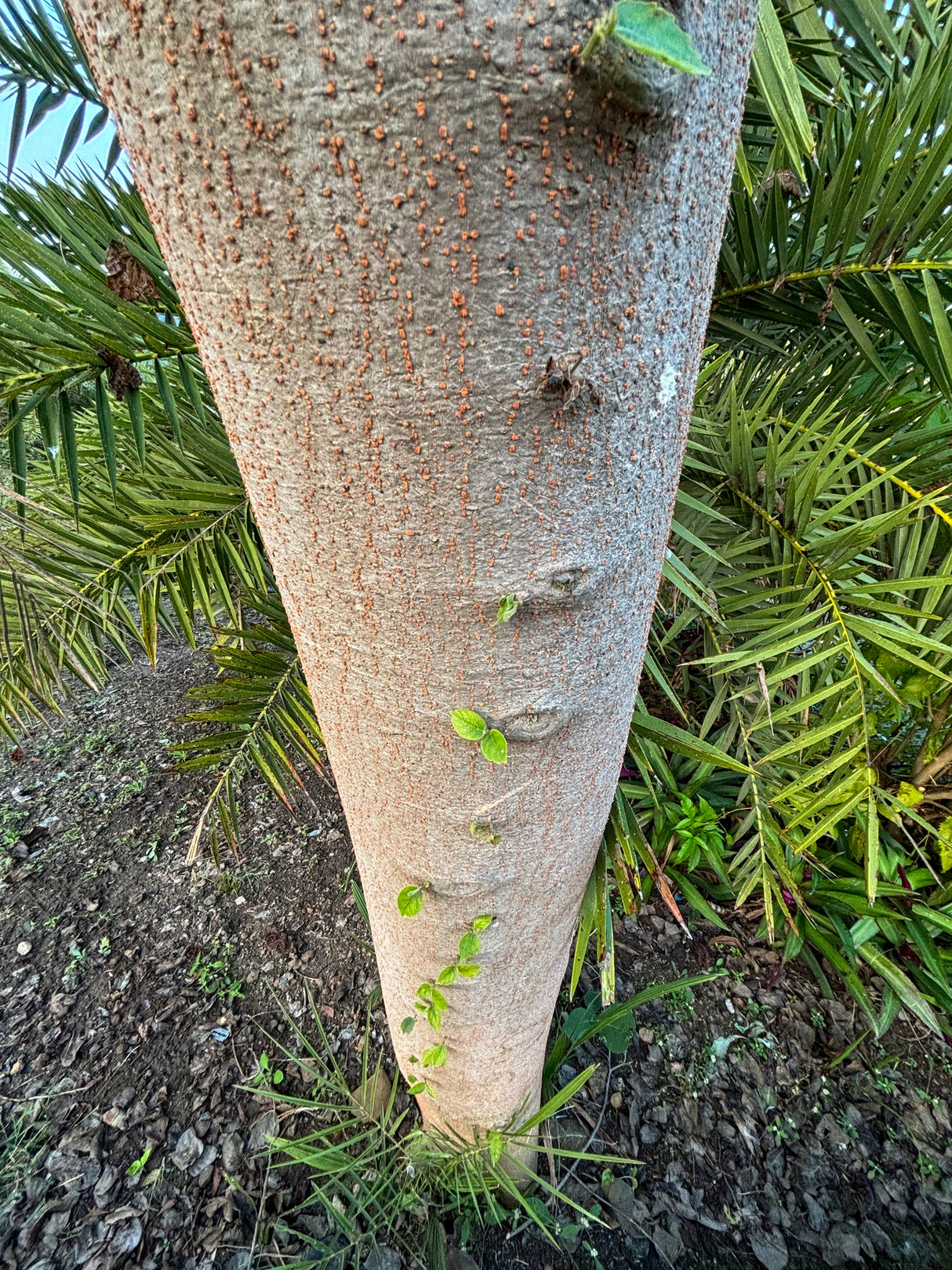Rhodosphaera rhodanthema – Deep Yellow Wood
The Rhodosphaera rhodanthema, commonly known as Deep Yellow Wood, is a stunning and versatile native Australian tree prized for its glossy, dark green foliage and striking yellow to orange flowers that appear in clusters. With a graceful, upright growth habit and a dense canopy, this deciduous tree provides excellent shade and is an ideal choice for feature planting, streetscapes, or parklands. Growing up to 8–15 meters tall, it thrives in a variety of climates and soils, making it both beautiful and adaptable.
Specifications:
- Height: 8–15 meters
- Width: 6–10 meters
- Native to: Eastern Australia
- Foliage: Glossy, dark green leaves; deciduous
- Growth rate: Moderate
Conditions:
- Soil: Prefers well-drained soils; adapts to sandy, loamy, or clay soils
- Light: Full sun to partial shade
- Water: Moderate; drought-tolerant once established
- Climate: Thrives in temperate, subtropical, and tropical regions
Additional Features:
- Flowers: Clusters of yellow to orange flowers; bloom in late spring to early summer
- Form: Upright, rounded canopy with a dense growth habit
- Uses: Ideal for feature planting, shade trees, parklands, or streetscapes
- Spacing: Plant 6–8 meters apart for individual specimens or closer for avenues
- Low Maintenance: Requires minimal pruning; trim lightly to maintain shape if desired
- Pest Resistance: Generally pest-free and resilient
- Drought Tolerance: Moderate; benefits from occasional deep watering in dry periods
- Frost Tolerance: Handles light frost; suitable for mild winter climates
- Wildlife Attraction: Flowers attract bees, birds, and pollinators; provides habitat for wildlife
- Timber Use: Known for its dense, high-quality timber used in fine woodworking
- Seasonal Appeal: Deciduous canopy with vibrant seasonal blooms for added interest
- Versatility: Complements native, formal, and contemporary garden designs
The Deep Yellow Wood is a beautiful and functional tree that enhances any landscape with its vibrant blooms, lush canopy, and adaptability. Its versatility and low-maintenance nature make it an excellent choice for both urban and rural settings.
The Benefits Of Buying An Advanced Tree
The Process Of Transplanting A Mature Tree
Identify the Tree's Root Zone
Identify the Tree's Root Zone
Before you begin, it's essential to identify the root zone or root ball of the tree. This is the area where the majority of the tree's feeder roots are located. It is typically estimated as 1 foot of root ball diameter for each inch of tree trunk diameter.
Prune the Roots
Prune the Roots
Root pruning should occur a few months before the actual move, ideally in the dormant season. This involves cutting a trench around the root zone to encourage the growth of new feeder roots, which will help the tree to establish itself in its new location.
Prepare the Tree
Prepare the Tree
Prior to digging, prune dead or excessive branches from the tree. This reduces the tree's overall mass, making it easier to handle, and decreases water loss post-transplant.
Dig Around the Root Ball
Dig Around the Root Ball
After determining the root ball's size, begin digging around it. Try to retain as much soil around the roots as possible. The depth should ideally get under the root system but be feasible for lifting.
Undercut the Root Ball
Undercut the Root Ball
Once you've dug around the periphery of the root ball, begin undercutting to sever the remaining roots beneath it.
Lift the Tree
Lift the Tree
With the root ball freed, carefully lift the tree out of the hole. For large trees, this will likely require machinery like a tree spade or crane. Always lift the tree by the root ball, not the trunk.
Prepare the Tree for Transport
Prepare the Tree for Transport
Once the tree is out of the ground, it's critical to protect the root ball to prevent damage. Wrap it in burlap and secure it with twine, wire or steel basket. This not only holds the root ball together but also helps retain moisture.
Water the Root Ball
Water the Root Ball
Prior to transportation, water the root ball thoroughly to ensure the roots stay moist.
Transporting the Tree
Transporting the Tree
Load the tree carefully onto a truck or trailer for transport. The tree should be securely positioned to avoid damage during transit. The tree should ideally be planted in its new location as soon as possible to minimize stress and increase its chance of survival.


